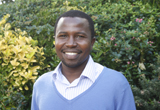 As World AIDS Day approaches, let’s pause for a second to pay tribute to the tremendous efforts around the globe which have resulted in more than eight million people having access to lifesaving HIV treatment today. According to UNAIDS’ Global AIDS report published last week, the number of people accessing HIV treatment increased by 63% between 2009 and 2011—amazing progress when you stop and really think about the numbers involved.
As World AIDS Day approaches, let’s pause for a second to pay tribute to the tremendous efforts around the globe which have resulted in more than eight million people having access to lifesaving HIV treatment today. According to UNAIDS’ Global AIDS report published last week, the number of people accessing HIV treatment increased by 63% between 2009 and 2011—amazing progress when you stop and really think about the numbers involved.
One of the most encouraging advances in recent years in countries bearing the brunt of the epidemic is the way in which HIV prevention and treatment, previously viewed as two opposite ends of the HIV response spectrum, are now seen as inextricably linked. The often difficult and ethical dilemma of whether to invest in prevention or treatment of HIV in the face of limited resources is no longer as pertinent. Research from a large multi country trial known as the HPTN 052 has shown that treatment for people living with HIV also has preventive benefits, meaning that by investing in treatment we reap preventive benefits.
Other notable achievements of late include the identification of new and more efficient drugs such as once-a-day pills. This is perhaps the most significant demonstration of how HIV treatment has become more patient oriented. Today, the preferences and the collective voice of people living with HIV are influencing biomedical HIV interventions which in response have become more tolerable and have a better fit into peoples’ lives.
But even more importantly, and on a much larger scale, the role of communities in the HIV response has undergone a transformation. Community members are no longer passive recipients of HIV care, but are actively involved in designing and implementing HIV programmes that are reaching vulnerable people, particularly marginalised groups at most risk of the epidemic, often in a way that mainstream health services can’t. The success of peer based programmes, whether sex workers and injecting drug users reaching their peers, or men encouraging other men to go for testing, is universally acknowledged.
The global community has increasingly reached a consensus that successful HIV programmes cannot be delivered by science alone. Civil society and communities play an essential role in mobilising people to access health systems and in providing care and support, particularly in the context of HIV. Community organisations and systems have a unique ability to interact with affected communities to understand and respond quickly to their HIV and broader health needs.
Back in the 80s and 90s, it was widely believed that affected communities—particularly in developing countries—didn’t have enough “HIV literacy” or technical ability to fully grasp the implications of the different drugs available and the regimes to follow. Looking back now, it’s clear that affected communities can and do understand HIV. A generation of informed community based advocates has sprung up who are identifying, lobbying, and responding to the needs of their own communities in sub-Saharan Africa, Latin America, and parts of Asia. In many countries all round the world, including Brazil and South Africa, the impact of fully engaging communities in the HIV response is now well documented and significant. The community response to HIV is playing a crucial yet largely unsung part in consolidating the gains made in the epidemic.
Such “AIDS-competent” communities that can assume a leading role in identifying and responding to barriers to treatment, prevention, and care services at the community level are often a gateway to wider community development and community health issues beyond HIV.
In recognition of the fact that communities need to be part of the health architecture that delivers HIV programmes, the International HIV/AIDS Alliance is currently conducting a community consultation to gather the views and preferences of people living with HIV to inform the widely anticipated WHO HIV treatment guidelines that will be published next year. The effective inclusion and engagement of communities to determine what treatment should be available, how it should be delivered and how communities can be involved in delivery and monitoring of HIV programmes is a significant part of these guidelines.
The power and collective strength of communities which can be harnessed when people who believe in themselves receive the right kind of support, is truly something to celebrate this World AIDS Day.
Gitau Mburu is senior advisor on HIV and Health Systems at the International HIV/AIDS Alliance which works to support community action on AIDS. For more about the civil society consultation on the new generation of ART guidelines, please see here.